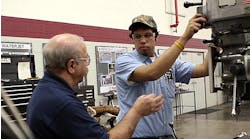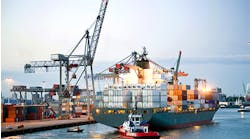Latest from Opinion
On average, inventory represents approximately 15% of total firm assets for public U.S. firms. If you think the cost of your inventory is merely the amount you pay for the items, it won’t take long for you to discover the truth. Running an inventory-focused business means there are some hidden costs, not everyone is aware of: warehousing, handling of the items, loss, etc. So, do you really know the true cost of your inventory?
First, we need to address the elephant in the room – carrying cost. The use of this vague term is incredibly deceptive; it gives a false impression that the cost of holding inventory is one big sum and that little can be done about it. According to the IMS Business Academy, inventory-carrying costs are expressed as a percentage of the average dollar value of inventory over a fixed period – usually a year. As a rule of thumb, inventory-carrying cost is 25% of a company’s average inventory investment, but when you tally up all the relevant carrying costs, it can run as high as 40% or more.
This is understandable, but it perpetuates the false impression that you have little power over the total – you do. Breaking down and identifying each separate cost percentage allows you the opportunity to rein-in those costs, and it allows you the opportunity to significantly impact your bottom-line – one single bite at a time.
Below are the four, broad categories of inventory carrying cost with descriptions and real-life examples to help you take control over your inventory:
Capital Cost. Your company’s capital cost is what you spend on carrying inventory, and includes two factors: inventory financing charges and opportunity losses. Arriving at your total inventory financing charges should be easy and straightforward – this is either the interest lost on the cash used to purchase inventory or the interest paid on a line-of-credit used to purchase inventory. Opportunity costs include both the opportunity missed because your money is invested in obsolete or under-performing inventory, and the opportunity missed for ALL money invested in inventory. Implementing an inventory management solution is a low cost and extremely effective method of identifying obsolete, overstocked or underperforming inventory.
Maxim Integrated Products, a manufacturer of various electronic systems and devices, found results came quickly. “Once we deployed an inventory solution in all eight stock rooms, and all 14,000 parts were labeled with barcodes, we discovered we were housing parts that we didn’t need to keep in inventory. As a result we sent those parts back to the vendors or to one of our other U.S. manufacturing sites, reducing the overall cost of our own inventory and freeing up a lot of cash and space,” said Maxim’s Javier Saenz. That freed cash can be invested in a myriad of ways: R&D for new products, additional staff, or monetary investments like mutual funds or money market accounts.
Capital cost should be the largest portion of your total carrying cost, typically range between 6-12%.
Inventory Service Cost — Service costs include insurance to cover your inventory and all taxes. Purchasing insurance may not seem novel or exciting, it is a decision that could make or break you. You need to evaluate the various, available premiums and the value of what you are insuring. Here are a few things to consider:
• Do you want to cover your items at the depreciated value (actual cost value) or do you want to pay a higher premium that would cover full replacement cost?
• What risks are you taking by purchasing cheaper coverage?
• You should also evaluate the possibility of loss because of theft or natural causes. If there is likelihood your inventory is attractive to those with access and opportunity, or if your warehouse is geographically located in an area prone to natural disasters – then you need to pay the higher premium. Find other ways to cut costs.
• Taxes are unavoidable. You have the ability to decrease taxes by decreasing your total inventory. Logistics expert Martin Murray said many local authorities tax the level of inventory in the warehouse, so higher levels of inventory will lead to higher taxes paid. Taking the time to effectively manage stock level will improve your tax rate. An inventory management solution provides all the necessary information needed to decrease unnecessary, duplicate stock.
Storage Space Cost —Storage space costs include all fees associated with renting or purchasing space to store your inventory: rent or mortgage, lighting, heating, air conditioning, janitorial services, equipment upkeep and all of the costs included in the handling of your inventory. Inventory needs a place to sit and it doesn’t put itself on a shelf. Whether you own or rent, you are paying to store your product. Your inventory also determines the space you need and whether you require specialized storage equipment. You will need to consider the cost to secure your facility. Security systems – low or high-end – cost money and many insurance policies require this securing of your inventory. Hurlbut & Associates reported these expenses may be made up primarily of wages and benefits, but also may include the depreciation or expense on hand-held radio frequency (RF) units, and other related equipment, as well as any miscellaneous expenses directly related to your inventory control team.
Implementing Inventory Management
The Ambient Monitoring group eliminated tens of thousands of dollars in wasted time and significantly improved its inventory process by implementing an inventory management solution, including, up to $30,000 per year of time saved that was formerly used searching for parts, over $6,000 per year of time saved that was formerly consumed by managing and replenishing the stockroom and better use of inventory dollars. Now, the Ambient Monitoring group stores a broader variety of items and an ideal number of each part. Needed items are always on hand, eliminating delays in equipment repairs. Overstock has also been eliminated, ensuring that a wider and more effective mix of parts is always available.
Your carrying cost for handling (including clerical tasks and cycle counting) will range between 3-8% and your carrying cost for warehousing and storage will range between 2-5%.
Inventory Risk Cost — Holding inventory comes with risk, and potential costs. Carrying unsold product is a gamble. If you carry inventory that depreciates quickly or becomes obsolete, there is considerably more pressure to turn over stock. If you’ve miscalculated the need for an item, and your turnover is slower than expected, you could be carrying inventory that has lost some or all of its value. This inventory mismanagement significantly impacts your risk cost.
The potential for inventory obsolescence is the greatest portion of your inventory risk cost with a range of 6-12% of your carrying cost. Included in your total risk cost is inventory shrinkage and damage. Inventory shrinkage is the loss of productsbetween the point of manufactureor purchase from a supplier and the point of sale. “Shrink” relates to the difference in the amount of margin or profitobtainable. If the amount of shrink is large, then profits go down.
Orthopedic Solutions, a third-party consulting service, found its clients lost a significant amount of inventory specifically to inventory shrinkage. Clients had a hard time tracking inventory. Manual tracking was slow and increased the amount of errors in data, on top of that, inventory was misplaced or lost – they had a huge inventory shrinkage issue. After implementing an inventory management solution, Orthopedic Solution’s clients reported a 90% decrease in inventory shrink.
Why worry about inventory management at all? The lack of proper management will result in a loss of revenue. Stocking items customers don’t want or having a shortage of the items they do want all lead to your inability to provide prompt, quality customer service.
You will be at a significant disadvantage if your competitors are able to out-market or adopt emerging technology more quickly than you. Level the playing field by reclaiming the costs associated with poor inventory management and reinvest in your business.










